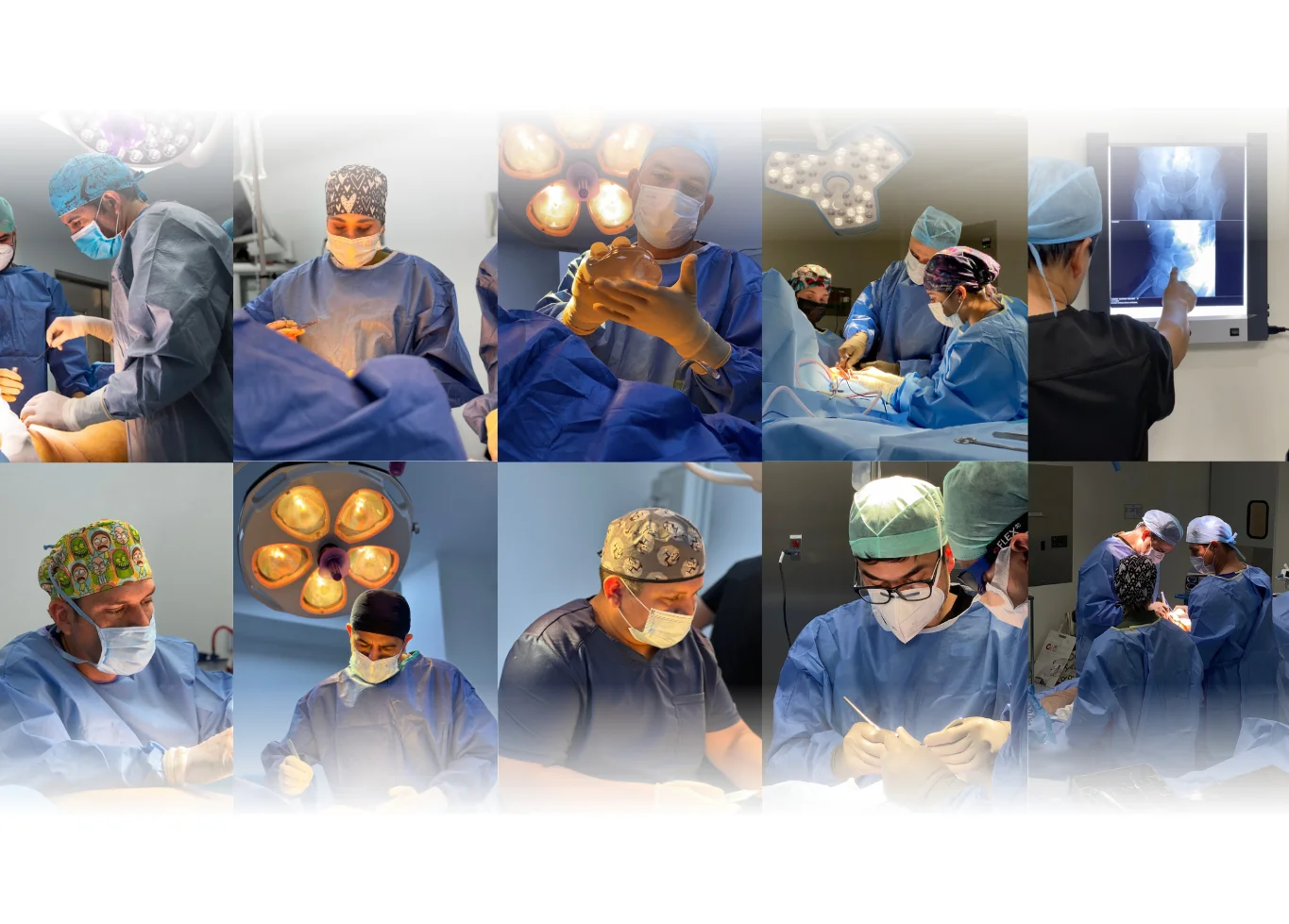Managing unwanted hair is a recurring chore for many. Shaving, waxing, plucking — they all demand time, can irritate the skin, cause ingrown hairs, and ultimately deliver only temporary relief. Over the past two decades, laser hair removal has become a popular alternative in many cities, including Brighton, offering the promise of long-lasting hair reduction.
In Brighton, multiple reputable clinics now offer medically supervised or aesthetic laser treatments. This guide will help you understand how laser hair removal works, whether you’re a suitable candidate, what to expect in terms of cost and results, and how to choose a trustworthy provider in Brighton.
Table of Contents
How Laser Hair Removal Works
At its core, laser hair removal uses a concentrated beam of light (laser) that is absorbed by the melanin (pigment) in the hair follicle. The laser energy is converted into heat, which damages the hair follicle’s ability to produce new hair without harming the surrounding skin when done properly.
Because hair grows in cycles (anagen, catagen, telogen), not all hairs are in a growth phase at the same time. The laser is effective only when the hair is in the growth (anagen) phase, which is why multiple sessions spaced over weeks are required.
After treatment, hairs may shed over the days or weeks that follow; what might appear as regrowth is often just that shedding process. Over successive treatments, fewer follicles are able to regenerate hair, resulting in long-term reduction.
It’s important to note: laser hair removal is generally considered permanent hair reduction, not absolute hair removal, as hormonal changes or dormant follicles may cause some regrowth later. Many users require occasional “top-up” sessions.
Types of Lasers and Technologies
There are several laser and light-based systems used in hair removal, each with advantages depending on skin type, hair colour, and area being treated. Some of the notable ones:
Diode lasers – Good for darker hair and a broader range of skin tones.
Alexandrite lasers – Often used for lighter to medium skin tones.
Nd:YAG lasers – Safer for darker skin tones, though sometimes less efficient for fine hair.
Blend or hybrid systems (e.g. Blend X, SPLENDOR X) – Combine wavelengths or modalities to better suit varied skin and hair types. For example, Brighton’s The Doctor Clinic uses SPLENDOR X, which allows customization for a wider range of skin tones and is said to reduce the risk of pigmentation issues.
Soprano Titanium – A technology used by Brighton’s Cells Aesthetics, which markets itself as “pain-free” laser hair removal.
Clinics may also use cooling technology (e.g. cryogen spray, cooling tips, chilled air) to reduce discomfort and protect surface skin.
Who Is a Good Candidate?
Laser hair removal tends to work best under certain conditions:
Ideal characteristics:
Dark hair (because the more pigment in the hair, the more the laser can target it).
Light to medium skin tone (though newer technologies allow safer treatments on darker skin too).
Hair located in areas not too close to eyes (e.g. not directly on the eyelid).
Someone willing and able to follow pre- and post-treatment care (avoid sun exposure, etc.).
Realistic expectations — full hair removal may not happen for everyone.
Less ideal situations:
White, grey, very light blonde or red hair (the pigment is minimal and may not absorb laser energy).
Recent sunburn, tan, or skin damage in the area.
Active skin infections, open wounds, or certain skin conditions in the area.
Pregnancy is often a contraindication until after.
Use of photosensitising medications (e.g. isotretinoin or certain antibiotics) may require waiting.
During consultation, a trained clinician will assess your skin type, hair type, medical history, and expectations to determine your suitability.
What to Expect: Consultation, Patch Test & Treatment
Consultation
Before any real treatment, the provider should conduct a full consultation. This involves:
Reviewing your medical history, medications, allergies
Assessing your skin type and hair colour
Discussing expectations, risks, and number of sessions
Answering questions you may have
Giving you instructions on how to prepare
Patch Test
Most clinics require a patch test (often 24–48 hours before full treatment) to check how your skin reacts to laser energy. Brighton’s Laser & Skin Clinics require a patch test (often £30 unless you’re taking a multi-session package).
If your skin tolerates the settings without adverse reaction, you proceed to treatment.
Treatment Session
The treated area will be cleaned, and often a topical numbing cream may be applied (or cooling measures used).
You (and the clinician) wear protective eye shields.
The clinician operates the laser device over the area in passes, adjusting settings based on feedback.
The sensation is often described as a slight sting or snap (akin to an elastic band).
The session length depends on the area — small zones like upper lip take minutes; larger zones like full legs may take an hour or more.
After the session, mild redness or swelling may be visible, which typically subsides within hours or days.
Treatment Plan & Number of Sessions
Because hair grows in cycles and not all follicles are active at once, you’ll need multiple treatments spaced weeks apart. A typical regimen:
6 to 10 sessions is common (some people may need more or fewer depending on hair density, area, and response).
Sessions are usually spaced 4 to 8 weeks apart, depending on the area (face tends to have shorter intervals, legs longer).
After the initial series, touch-up treatments may be needed every 6–12 months to maintain results.
Each person’s hair reduction plateau point is different; some may achieve near “hair-free” status, while others always retain some sparse hair (often fine and light).
Costs & Pricing in Brighton
Laser hair removal costs vary depending on area treated, number of sessions, and the clinic’s equipment and reputation. Here’s a sense of pricing in Brighton:
From Laser & Skin Clinics (Brighton / Worthing):
| Treatment Area | Single Session | 3 Sessions | 6 Sessions & Patch Test |
|---|---|---|---|
| Lip | £80 | £230 | £440 |
| Chin | £90 | £250 | £480 |
| Lip + Chin | £100 | £280 | £540 |
| Full Face | £120 | £340 | £660 |
| Full Face & Neck | £140 | £400 | £780 |
| Bikini Line (Basic) | £100 | £280 | £540 |
| Bikini Brazilian | £120 | £340 | £660 |
| Bikini Hollywood | £140 | £400 | £780 |
| Underarms | £80 | £230 | £440 |
| Half Arms | £100 | £280 | £540 |
| Full Arms | £140 | £400 | £780 |
| Full Chest or Back | £200 | £570 | £1,100 |
| Lower or Upper Legs | £200 | £570 | £1,100 |
| Full Legs | £280 | £790 | £1,550 |
Note: Patch test costs £30 unless you pay for a full 6-session package in one go.
Other clinics in Brighton offer comparable pricing. For smaller areas like lips or facial zones, some clinics advertise from £40–£50 per session.
Keep in mind:
Bundle packages often offer discounts.
Always ask for the total cost for the full recommended plan, not just a single session price.
Hidden costs (patch tests, follow-up treatments) should be clarified upfront.
Cheaper is not always better — the safety, expertise, and type of laser matter greatly.
Leading Clinics in Brighton & Surrounding Areas
Here’s a non-exhaustive list of reputable clinics and providers in Brighton and Hove offering laser hair removal or related services:
| Clinic / Provider | Location / Notes |
|---|---|
| Laser Clinics UK – Brighton | Part of a UK-wide chain; offers laser hair removal alongside skin treatments and cosmetic services. |
| sk:n Clinics Brighton | Large UK provider with presence in Brighton. |
| Thérapie Clinic – Brighton & Hove | Located on Western Road, offers laser hair removal, anti-wrinkle, fillers, skin treatments. |
| Laser & Skin Clinics – Brighton | Small clinic with a good reputation; specialises in laser and aesthetic treatments. |
| OFF Skin & Laser Clinic | At 187A Portland Road, Brighton & Hove. |
| Grand Aesthetics | Serves Brighton & Hove, offers laser hair removal and aesthetic services. |
| Cells Aesthetics | On Portland Road (Hove), promotes Soprano Titanium “pain-free” laser hair removal. |
| The Doctor Clinic | In Brighton & Lewes, offers SPLENDOR X technology and tailored treatments. |
| TLC Skin, Body & Laser Clinic | Brighton-based, offering laser hair removal among other services. |
| Grey Door Therapy Clinic | Offers both laser hair removal and electrolysis in Hove / Brighton area. |
| Electrolysis Brighton | Specialises in electrolysis but also relevant to hair removal conversations. |
Tips when choosing a clinic:
Ensure the clinicians are properly trained and certified.
Ask which laser technology they use.
Tour or inspect the facility’s hygiene and safety practices.
Request before/after photos or client testimonials.
Make sure they include patch tests, aftercare support, and clarity on total pricing.
Prefer clinics that assign you the same practitioner over the course, as consistency helps with tracking results.
Risks, Side Effects & Safety
While laser hair removal is generally safe when performed by qualified professionals, certain risks exist. Being informed helps you mitigate them.
Common, short-term side effects (mild):
Redness, slight swelling, or pinkness in treated area
Mild burning sensation or heat
Itching
Temporary pigment changes (hyperpigmentation or hypopigmentation)
Crusting or scabbing in rare cases
These typically resolve within hours to a few days with proper care.
Less common or serious complications:
Blistering or burns (especially if laser settings are incorrect)
Scarring (rare)
Persistent pigment changes, especially in individuals with darker skin or recent sun exposure
Infection, if skin integrity is compromised
To minimize risks:
Choose a clinic with robust safety protocols and experienced practitioners.
Ensure they conduct patch tests before full treatment.
Avoid sun exposure and tanning before/after treatments.
Follow the provided aftercare instructions carefully.
Many newer laser systems and hybrid technologies aim specifically to reduce these side effects and broaden the safe range of treatment across skin tones. Clinics such as The Doctor Clinic in Brighton use SPLENDOR X technology to reduce pigmentation risk and accommodate diverse skin types.
Preparation Before Treatment
Good preparation improves results and reduces risks. Typical pre-treatment guidelines include:
Avoid sun exposure or tanning — for several weeks before treatment.
No waxing, plucking, threading, or bleaching — leave hair roots intact so the laser can target them (usually at least 4–6 weeks).
Shave the area — just before treatment (often the night before), so laser energy is concentrated on follicles, not hair above skin.
Clean the skin — no creams, lotions, deodorants, makeup, or perfumes on the treatment area on the day.
Avoid certain medications — some drugs make skin more sensitive to light (your clinician should review your medications at consultation).
Wear loose, comfortable clothing — particularly for treated areas to avoid irritation.
Avoid hot baths, saunas or heavy exercise before the session (to reduce skin sensitivity).
Your clinic should provide you a precise list based on your skin/hair type and treatment area.
Aftercare & Maintenance
Proper aftercare supports healing, improves comfort, and sustains results:
Use gentle soothing agents (e.g. aloe vera gel, mild, fragrance-free moisturisers).
Avoid sun exposure and always use a broad-spectrum sunscreen on the area (SPF 30+ or higher) for several weeks.
Do not exfoliate, scrub, use harsh chemicals, or take hot baths/saunas for a few days.
Avoid tight clothing rubbing against treated area initially.
Do not pick, scratch, or rub flaking skin.
Continue to shave (not wax) if hair remains or regrowth occurs.
Keep a schedule of your next sessions — consistency is key.
Monitor skin for any signs of adverse reaction and contact your clinic if any concern arises.
Most side effects like redness or swelling subside within a few hours to nights. If reactions persist or worsen, your provider should be available to assist.
Alternatives & Comparisons (IPL, Electrolysis, Waxing)
IPL (Intense Pulsed Light)
Uses a broad spectrum of light instead of a single wavelength (laser).
Less precise and may pose greater risk to darker skin
Sometimes less effective, particularly for deep, coarse hair
Often cheaper but may require more sessions or yield less long-term results
Electrolysis
Involves inserting a fine probe into each hair follicle and applying an electrical current to destroy the follicle.
Works on all hair colours (even white/grey) and skin types.
Very labor-intensive and time-consuming (especially for larger areas)
More painful and usually more expensive in the long run
Often chosen for small, difficult, or hormonally driven areas
Waxing / Sugaring / Shaving / Depilatory creams
Cheap and accessible, but temporary
Can cause ingrown hairs, irritation, cuts, or discomfort
Need to be repeated frequently
Many clients find a hybrid approach effective: e.g. laser for larger areas, electrolysis for residual or tricky regions, and shaving in between sessions if needed.
Pros & Cons Summary
| Pros | Cons / Limitations |
|---|---|
| Long-term hair reduction, less frequent maintenance | Not guaranteed 100% permanent removal |
| Less irritation, ingrown hairs, stubble compared to shaving/waxing | Even the best results may require occasional top-ups |
| Speeds up grooming routine, saves money over time | Upfront cost can be significant |
| Technologies have advanced to treat a range of skin tones | Some skin/hair types (e.g. light hair) respond poorly |
| Minimal downtime, relatively quick sessions | Risk of side effects if improperly performed |
| Precision in small or delicate areas | Multiple sessions needed |
| Often safer than DIY at-home devices for deeper treatment | Requires commitment and follow-up |
FAQs
1. Is laser hair removal permanent?
It is best described as permanent hair reduction. Most users see a dramatic long-term reduction, but occasional regrowth or maintenance sessions may be necessary.
2. How many sessions will I need?
Typically 6–10 sessions, spaced several weeks apart. The exact number depends on your hair density, skin/hair type, and treatment area.
3. Does it hurt?
Most people describe a mild stinging or snapping sensation. Advanced lasers and cooling systems help reduce discomfort. Some areas may feel more sensitive.
4. Can all hair and skin types be treated?
Historically, laser was most effective for darker hair on lighter skin. But newer technology (hybrid systems, dual wavelengths) allows treatment of a broader range of skin tones. However, very light, grey, or white hair remains challenging.
5. When will I see results?
You may see hair shedding in days to weeks, but true reduction shows over successive sessions. Noticeable improvement often begins after 2–3 sessions.
6. What are the risks or side effects?
Mild redness, swelling, or skin irritation are common. More serious side effects like burns or changes in pigmentation are rare but possible. Choosing a qualified provider and following instructions helps minimize these.
7. How much does it cost in Brighton?
Prices vary by area and clinic, but for small facial zones you may see ~£40–£100 per session, while larger zones like full legs can cost £200+ per session. Multi-session packages often yield better per-session rates.
8. Can I do it if I’m tanned?
No — recent tanning increases risk of pigment damage and reduces laser contrast. You’ll usually be asked to wait until tan fades.
9. Can I wax or pluck between sessions?
No — waxing/plucking removes the hair root which the laser targets. You can shave, though.
10. What if hair grows back later?
You can have occasional top-up sessions (often annually or semi-annually) to maintain the result.
11. Is laser hair removal safe during pregnancy?
Most clinics avoid laser hair removal during pregnancy as a precaution, especially in hormonally sensitive areas. Always consult your clinician and obstetrician.
12. What should I look for in a clinic?
Qualified, trained practitioners
Evidence of use of up-to-date, medical-grade lasers
Patch tests and consultation included
Clear pricing with no hidden fees
Good hygiene, safety protocols
Positive reviews or before/after photos
Aftercare support or follow-up
Conclusion
Laser hair removal in Brighton has evolved significantly over recent years. Clinics here offer a wide range of advanced technologies, from SPLENDOR X to Soprano Titanium, and many cater to diverse skin and hair types. If you’re seeking a semi-permanent solution to unwanted hair, laser removal is a compelling option — so long as you go in with realistic expectations, follow through with the recommended sessions, and choose a safe, experienced provider.












